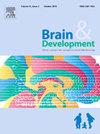冠状病毒大流行对儿童热性惊厥急诊转运时间的影响:一项回顾性研究
IF 1.3
4区 医学
Q4 CLINICAL NEUROLOGY
引用次数: 0
摘要
背景:热性惊厥是儿童急诊转运的常见原因。尽管冠状病毒病(COVID-19)大流行扰乱了包括紧急服务在内的医疗保健系统,但其对儿童热性癫痫发作的运输时间的影响尚不清楚。这项研究旨在评估大流行如何影响运输时间。方法:回顾性分析2018年至2022年我院急诊科就诊情况。包括2019年(COVID-19大流行之前)和2022年(大流行期间)的发热性癫痫发作患者。比较这些年间的转运次数和临床数据。多变量回归分析用于确定与较长运输时间相关的因素。结果:2019年和2022年分别有329例和282例患者。中位转运时间从2019年的33分钟显著增加到2022年的39分钟(p结论:在COVID-19大流行期间,儿童热性癫痫发作的转运时间显著增加,延误超过60分钟的时间较多,特别是在偏远地区。这些发现突出了加强区域紧急运输系统的必要性,以减少护理时间,特别是对于居住在离医院较远的患者。本文章由计算机程序翻译,如有差异,请以英文原文为准。
Impact of the coronavirus disease pandemic on emergency transport times for pediatric febrile seizures: A retrospective study
Background
Febrile seizures are a common cause of emergency pediatric transport. Although the coronavirus disease (COVID-19) pandemic disrupted healthcare systems, including emergency services, its impact on transport times for pediatric febrile seizures remains unclear. This study aimed to evaluate how the pandemic affected transport times.
Methods
We retrospectively reviewed emergency department visits at our hospital between 2018 and 2022. Patients with febrile seizures in 2019 (before the COVID-19 pandemic) and in 2022 (during the pandemic) were included. Transport times and clinical data were compared between those years. Multivariate regression analysis was used to identify factors associated with longer transport times.
Results
There were 329 and 282 patients in 2019 and 2022, respectively. The median transport time increased significantly from 33 min in 2019 to 39 min in 2022 (p < 0.001). The proportion of cases exceeding 46 min increased from 10 % to 28 %, whereas those exceeding 60 min increased from 1.2 % to 7.4 %. A longer transport time was associated with seizure duration, onset year (2022), and transport from distant areas. Onset in 2022 was identified as an independent factor. Stratified analysis showed significantly longer transport times in adjacent and remote areas during the pandemic no significant difference in transport times near the hospital.
Conclusion
Transport times for pediatric febrile seizures increased significantly during the COVID-19 pandemic, with more delays of over 60 min, especially in remote areas. These findings highlight the need to strengthen regional emergency transportation systems to reduce time to care, particularly for patients living farther from hospitals.
求助全文
通过发布文献求助,成功后即可免费获取论文全文。
去求助
来源期刊

Brain & Development
医学-临床神经学
CiteScore
3.60
自引率
0.00%
发文量
153
审稿时长
50 days
期刊介绍:
Brain and Development (ISSN 0387-7604) is the Official Journal of the Japanese Society of Child Neurology, and is aimed to promote clinical child neurology and developmental neuroscience.
The journal is devoted to publishing Review Articles, Full Length Original Papers, Case Reports and Letters to the Editor in the field of Child Neurology and related sciences. Proceedings of meetings, and professional announcements will be published at the Editor''s discretion. Letters concerning articles published in Brain and Development and other relevant issues are also welcome.
 求助内容:
求助内容: 应助结果提醒方式:
应助结果提醒方式:


